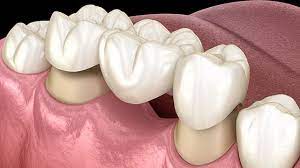
Understanding Dental Bridges: Restoring Your Smile and Function
A dental bridge is a fixed dental restoration used to replace one or more missing teeth. It consists of artificial teeth, known as pontics, that are anchored in place by adjacent natural teeth or dental implants. Bridges help restore function, improve aesthetics, and prevent oral health complications caused by missing teeth.
Why Are Dental Bridges Needed?
Dental bridges serve several important purposes, including:
Restoring Chewing and Speaking Ability – Missing teeth can make it difficult to chew food properly and may also affect speech. A dental bridge helps restore normal function.
Maintaining Facial Structure – Tooth loss can lead to changes in facial shape due to bone resorption. A bridge helps preserve the natural structure of your face.
Preventing Teeth from Shifting – When a tooth is lost, the surrounding teeth may shift into the gap, leading to misalignment. A bridge keeps teeth in their proper position.
Enhancing Aesthetic Appearance – A well-designed bridge blends seamlessly with natural teeth, providing a complete and confident smile.
Types of Dental Bridges
There are several types of dental bridges, each suited for different dental needs:
Traditional Bridge – This is the most common type, consisting of artificial teeth held in place by crowns on adjacent natural teeth.
Cantilever Bridge – Used when only one adjacent tooth is available to support the bridge, making it a less common option.
Maryland Bonded Bridge – This bridge uses a metal or porcelain framework bonded to the backs of adjacent teeth, requiring minimal preparation.
Implant-Supported Bridge – Instead of using natural teeth, this type relies on dental implants for support, providing a strong and long-lasting solution.
The Dental Bridge Procedure
Getting a dental bridge typically requires two or more visits to the dentist:
Initial Visit: Preparation and Impressions
The adjacent teeth are reshaped to accommodate crowns (if required).
Impressions are taken to ensure a precise fit.
A temporary bridge is placed to protect the prepared teeth.
Second Visit: Bridge Placement
The temporary bridge is removed.
The permanent bridge is adjusted for fit and comfort.
Once approved, the bridge is cemented into place for long-term function.
Caring for Your Dental Bridge
Proper care ensures the longevity of your dental bridge. Follow these guidelines:
Brush twice daily and floss under the bridge using special floss or interdental brushes.
Avoid chewing excessively hard foods that may damage the bridge.
Maintain regular dental check-ups for professional cleaning and assessment.
Conclusion
Dental bridges are an effective solution for replacing missing teeth, restoring both function and aesthetics. If you have lost a tooth and are considering a bridge, consult your dentist to explore the best options for your dental health. With proper care, a dental bridge can provide many years of durability and confidence in your smile.
